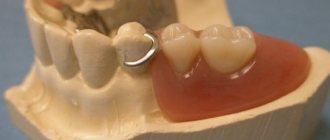Antibiotics are substances of biological or semi-synthetic origin. They are used in medical practice to combat pathogenic microbes and viruses. Before the advent of these medications, typhoid fever, dysentery, pneumonia, and tuberculosis had the status of incurable diseases. Today, treatment of infectious diseases is possible with the use of 1-6 generations of antibiotics.
At this moment, the pharmacological industry produces more than 2000 varieties of drugs of this type. Doctors have described the effects of about 600 positions, and about 120-160 drugs are used in medical practice.
Important! For any disease, it is recommended to take antibiotics after consulting a doctor. Otherwise, antibiotic resistance may develop (decreased sensitivity of pathogenic microorganisms to antibacterial agents).
Pharmacological properties
Ciprfloxacin solution is an antimicrobial agent with a broad spectrum of action. The antibiotic included in its composition is a fluoroquinolone derivative. Its action is based on the mechanism of suppression of bacterial DNA gyrase and disruption of DNA synthesis, affecting the growth and division of bacterial microflora, which causes the rapid death of bacterial cells.
The use of ciprofloxacin does not cause resistance to other actibiotics: aminoglycosides, penicillins, tetracyclines, cephalosporins, etc. Most gram-positive and gram-negative aerobic bacteria are sensitive to ciprofloxacin. Resistant to the drug: Pseudomonas cepacia, Bacteroides fragilis, Pseudomonas maltophilia, Clostridium difficile Nocardia asteroides, Ureaplasma urealyticum. It is ineffective against Treponema pallidum.
Release form
Tsiprolet is produced by many pharmaceutical companies, as it is one of the most popular antibacterial agents. It is produced in the following dosage forms:
- infusion solution - in polyethylene bottles of 100 ml, where the content of ciprofloxacin does not exceed 2 mg per ml;
- tablets - each containing 250 mg or 500 mg of the main active ingredient, they are packaged in blisters of 10 pieces;
- eye drops - sold in bottles with a dropper of 5-10 ml, which contain 3 mg of ciprofloxacin per 1 ml of solution.
According to the instructions for use of Tsiprolet 500, these tablets contain the maximum dose of the active substance. They are used to treat severe bacterial lesions in advanced infections.
Directions for use and doses
In ophthalmic practice, for mild to moderately severe eye infections, it is prescribed to instill 1 or 2 drops of Ciprofloxacin solution conjunctivally into the affected eye every 4 hours.
Cases of severe infection require instillation of 2 drops every hour. As the condition improves, the frequency of instillations is reduced.
When treating a bacterial corneal ulcer, it is recommended to apply a solution of Ciprfloxacin: on the first day, 1 drop every 15 minutes, for six hours, then, in the same dosage, every 30 minutes. On day 2, a drop of the drug is added every hour. Starting from day 3, a drop of Ciprfloxacin solution is added to the affected eye every 4 hours. The duration of such therapy is 14 days.
Adverse reactions and contraindications for use
Tsiprolet very rarely causes allergic reactions. After treatment with this medication, the following side effects most often develop: dyspeptic disorders, nausea and vomiting, skin itching and rash, shortness of breath.
The use of this medicine is contraindicated in the following cases:
- during pregnancy;
- if you are allergic to ciprofloxacin and quinolone drugs;
- in adolescence and childhood;
- during lactation.
Tsiprolet is prescribed with caution to elderly patients. The medication is used only in special cases for people suffering from epilepsy, vascular pathologies, and organic diseases of the brain. Such patients are more likely to experience side effects due to taking the drug, so this antibiotic is indicated for them only in life-threatening situations. In case of allergic reactions and other complaints (for example, joint pain, myalgia), use of the medicine should be discontinued.
special instructions
Ciprofloxacin eye drop solution is not intended for injection.
When using this drug in combination with other ophthalmic solutions, the interval between their applications should be up to 5 minutes.
If any signs of hypersensitivity appear, use of the solution should be discontinued.
During treatment with Ciprofloxacin solution, soft contact lenses are not recommended. Or they must be removed before each instillation.
Store Ciprofloxacin solution at room temperature, in a dark place. Keep away from children.
The shelf life of the bottle before opening is 3 years. After opening - 4 weeks.
Instructions for use CIPROFLOXACIN
Severe infectious diseases and mixed infectious processes caused by gram-positive and anaerobic flora
Monotherapy with ciprofloxacin is not suitable for the treatment of severe infections and diseases that may be caused by gram-positive or anaerobic pathogenic flora. In these cases, ciprofloxacin should be prescribed simultaneously with other antibacterial drugs.
Streptococcal infection (including Streptococcus pneumoniae)
Ciprofloxacin is not recommended for the treatment of streptococcal infections due to lack of effectiveness.
Urogenital infections
Epididymo-orchitis and pelvic diseases can be caused by fluoroquinolone-resistant Neisseria gonorrhoeae. Ciprofloxacin should be co-administered with other antibacterial drugs, unless ciprofloxacin-resistant Neisseria gonorrhoeae can be excluded. If clinical improvement is not observed within 3 days, then treatment should be reconsidered.
Intraperitoneal infectious diseases
There is limited data on the effectiveness of ciprofloxacin for the treatment of postoperative intraperitoneal infections.
Traveler's diarrhea
When choosing ciprofloxacin, it is necessary to take into account information about drug resistance of the relevant pathogenic microorganism in the country being visited.
Infectious diseases of bones and joints
Ciprofloxacin should be prescribed in combination with other antimicrobial drugs and only after a microbiological study.
anthrax
Use in humans is based on in vitro susceptibility studies and animal studies. Information on the use of the drug in humans is limited. The doctor should be guided by national and/or international documents related to the treatment of this disease.
Children and teenagers
Treatment can only be prescribed by a specialist experienced in the treatment of cystic fibrosis and/or severe infectious diseases in children and adolescents. Safety data obtained from randomized, double-blind studies of ciprofloxacin in children have identified cases of possible drug-related arthropathy (identified by clinical signs and symptoms). Treatment should be started only after assessing the benefit/risk ratio, as joint-related adverse reactions may occur.
Bronchopulmonary infectious diseases
Clinical studies included children and adolescents aged 5-17 years. There are limited data regarding the treatment of children aged 1 to 5 years.
Complicated urinary tract infections and pyelonephritis
Clinical studies included children and adolescents aged 1 to 17 years. Treatment with ciprofloxacin should be considered in cases where treatment with other drugs is not possible, and only after microbiological analysis.
Other specific severe infectious diseases
Ciprofloxacin is used in the treatment of other serious infectious diseases according to official guidelines or after a careful assessment of the benefit/risk ratio in cases where other treatment is not possible or after an unfavorable outcome of conventional treatment, and only after microbiological analysis.
Hypersensitivity
After taking a single dose of the drug, hypersensitivity reactions may occur, including anaphylactic and anaphylactoid reactions. If these reactions occur, it is necessary to stop taking the drug and prescribe appropriate conservative treatment.
Musculoskeletal system
Ciprofloxacin should not be used in patients with a history of tendon disease or quinolone-related disorders. However, in rare cases, Ciprofloxacin may be prescribed to such patients for the treatment of certain severe infectious diseases after microbiological confirmation of the causative agent and assessment of the risk/benefit ratio. Because there have been isolated cases of tendinitis or tendon rupture during treatment with fluoroquinolones (primarily in elderly patients or in patients concomitantly taking corticosteroids), if any signs of this disease, for example, painful swelling or inflammation, the drug should be discontinued and immobilize the affected limb. Ciprofloxacin should also be used with caution in patients with myasthenia gravis.
Photosensitivity
Ciprofloxacin has been shown to cause photosensitivity reactions. Patients taking Ciprofloxacin should avoid direct exposure to sunlight and UV radiation.
CNS
It is known that quinolones can initiate seizures and lower the seizure threshold. Ciprofloxacin should be used with caution in patients with diseases of the central nervous system that provoke seizures, and if these phenomena occur, the drug should be discontinued.
Cases of polyneuropathy (based on neurological symptoms such as pain, burning, agitation, muscle weakness) have been reported in patients receiving ciprofloxacin. If symptoms of this disease occur, including pain, burning, tinnitus, numbness and/or weakness, the drug should be discontinued to prevent the development of an irreversible condition.
The cardiovascular system
Since the use of ciprofloxacin has been associated with cases of QT prolongation, caution should be exercised when treating patients at risk of developing TdP.
Caution should be exercised when using fluoroquinolones, including Ciprofloxacin, in patients with known risk factors for QT prolongation:
- congenital long QT interval syndrome;
- concomitant use of drugs that are known to prolong the QT interval (for example, class IA and III antiarrhythmic drugs, tricyclic antidepressants, macrolides, antipsychotics);
- electrolyte disturbances, especially uncorrected hypokalemia, hypomagnesemia;
- women and elderly patients are more sensitive to the effects of drugs that prolong the QT interval, such as Ciprofloxacin, so special caution is required;
- heart disease (for example, heart failure, myocardial infarction, bradycardia).
Gastrointestinal tract
The presence of severe and persistent diarrhea during or after treatment with the drug (including several weeks after treatment) may indicate pseudomembranous colitis (life-threatening, possibly fatal), requiring immediate treatment. In such cases, ciprofloxacin should be immediately discontinued and appropriate treatment initiated. The use of antiperistaltic drugs in this situation is contraindicated.
Renal and urinary system
During treatment with ciprofloxacin, to avoid the development of crystalluria, it is necessary to ensure that the patient receives a sufficient amount of fluid.
Hepatobiliary system
Cases of liver necrosis and life-threatening liver failure associated with the use of ciprofloxacin have been reported. If any signs or symptoms of liver disease (such as anorexia, jaundice, dark urine, itching or a tense abdomen) appear, treatment with the drug should be stopped.
Glucose-6-phosphate dehydrogenase deficiency
In patients with glucose-6-phosphate dehydrogenase deficiency, the use of ciprofloxacin may cause hemolytic reactions. It is necessary to avoid prescribing the drug to such patients, except in cases where the potential benefit outweighs the possible risk. In this case, the potential for hemolysis should be monitored.
Resistance
During long-term therapy and in cases of treatment of nosocomial infections and/or infections caused by Staphylococcus and Pseudomonas, there may be a potential risk of isolation of ciprofloxacin-resistant bacteria.
Cytochrome P450
Ciprofloxacin inhibits CYP1A2, thereby causing an increase in serum concentrations of drugs metabolized by this enzyme (for example, theophylline, clozapine, ropinirole, tizanidine). Patients taking these drugs concomitantly with ciprofloxacin should be monitored for clinical signs of overdose.
Tests
When assessing the results of bacteriological tests, the in vitro activity of ciprofloxacin against Mycobacterium tuberculosis should be taken into account.
Impact on the ability to drive vehicles and operate machinery
Ciprofloxacin may affect the patient's reaction speed, as a result of which the ability to drive a car or engage in other activities that require increased attention and speed of psychomotor reactions may be impaired.











